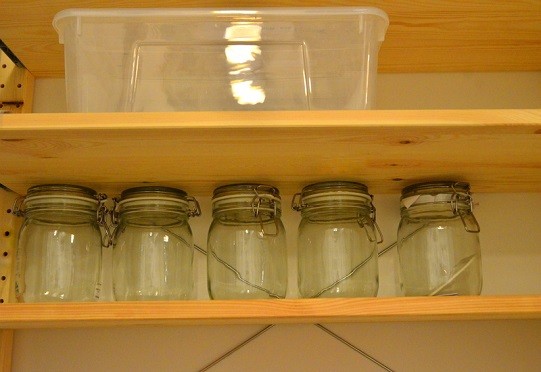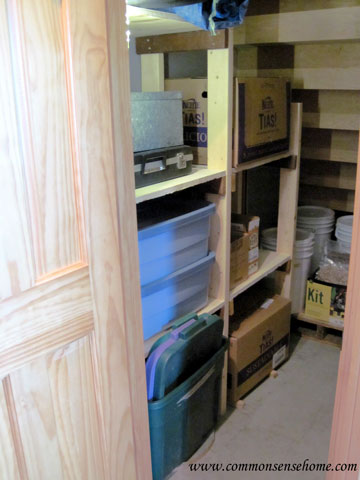Having organized storage space is not only critical in terms of the amount of survival preparation you can store.
It is also important because the more organized you are in a survival situation, the less stressful it will be to you and those enduring the moment with you.
Here are some general storage tips to make your living space more efficient and organized.
Finding Storage Space
1. Existing Storage Areas
Clean and organize existing storage areas such as kitchen cupboards, pantries, closets and garages. Get rid of badly out of date food items. Take a hard look at what you have and decide if you *really* need it.
If not, rehome it and make more room for the things you do need. Clutter is a daily time eater and the enemy of functional storage.
2. Under Stair Storage
It doesn’t take mad skills to build some simple under stair storage. A little box framing and some plywood and you’ve got shelving.
Slip in a pallet and you’ve got an out of the way spot for bulk storage of food and water. I don’t suggest storing anything directly on concrete or dirt floors. Both could potentially interact with and damage your containers.
3. Grab a corner
Use Furniture with Built in Storage or Room for Storage Underneath
There are many cool built-in storage furniture options available, but you can keep it simple and use storage that slides under your existing furniture, such as tables or beds. If you have some basic carpentry skills or a nice tablecloth, you can even fashion tables that are storage themselves.
4. Garages, Outbuildings and Porches
These areas can be used for storage of durable goods, and limited food storage. Remember, when it comes to food – temperature swings and moisture are the enemies of long term, quality storage. There is also a much higher incidence of rodent and bug infestations, so plan accordingly. Mice and bugs can’t generally get through heavy plastic, but they can and will chew through light plastic and cardboard. Rats can get through just about everything except metal. Rodents and bugs may not only eat your stash, but also contaminate what they leave behind (and the general area).
5. How to Store Food for Best Shelf Life
What you store will depend on what you eat. Don’t buy up a whole bunch of “emergency food” that you think you will eat “if things get bad enough”. Sure, you can have some things like dehydrated meals or MREs on hand, but I wouldn’t want it for the bulk of my storage. I’ve read the ingredients lists, and most of those prepackaged foods are just plain nasty.
6. The big things you want to avoid for food storage are:
• Heat
• Moisture
• Light
• Oxygen
• Odors
• Dirt/DustCool, dark dry storage will make your food last the longest. (Unless you’re dealing with root cellar storage, which requires some moisture.)
Keeping your storage space organized and maximized is always one of those checklist items most of us mean to get to, but never quite accomplish.
By making your storage space a priority, you increase your preparation capabilities and organize your living space.
For more ideas on effective storage, please visit Common Sense Homesteading.


